Have you ever felt as though you’re drowning in monotonous work? The daily grind, which includes everything from organizing your inbox to creating reports, may seriously sap your creativity. Imagine having a dedicated helper who works around the clock to take care of the tedious tasks so you can concentrate on the important things. That’s the power of agentic ai, not science fiction anymore. What is agentic ai, then? To put it simply, it’s a form of artificial intelligence that can carry out tasks on its own to accomplish a particular objective.
Imagine it as an intelligent assistant that not only follows your instructions but also acts independently, plans, and carries out complex tasks. What’s the best part? You don’t need to write any code to build your own AI agent.

From comprehending the fundamentals to developing a useful, automated process, this article will take you through every step of how to build ai agent.
Why Should You Care About Agentic AI?
A significant advancement in artificial intelligence is represented by agentic ai. Agentic ai is proactive in contrast to classical AI, which is frequently reactive and necessitates explicit instructions for each action. It is intended to start itself and is able to:
- 🎯 Setting its own sub-goals: If you instruct it to “handle customer inquiries,” it will determine what needs to be done, including updating a CRM, reviewing a knowledge base, and writing a response.
- 📌 Learning and adapting: An agentic ai has the capacity to gain knowledge from its interactions and enhance its functionality over time.
- 🚀 Using numerous tools: To complete a task, it can move fluidly between various apps, such as a spreadsheet, project management software, and email.
This technology is revolutionary for entrepreneurs and content producers. It’s similar to having a virtual team member who can take care of your research, social media, and even initial customer conversations, allowing you to concentrate on strategy and growth.
Conclusion: Your personal digital assistant on steroids is agentic ai. It is a self-sufficient system that can manage intricate, multi-step processes without your continual oversight. Are you prepared to build your own AI agent?
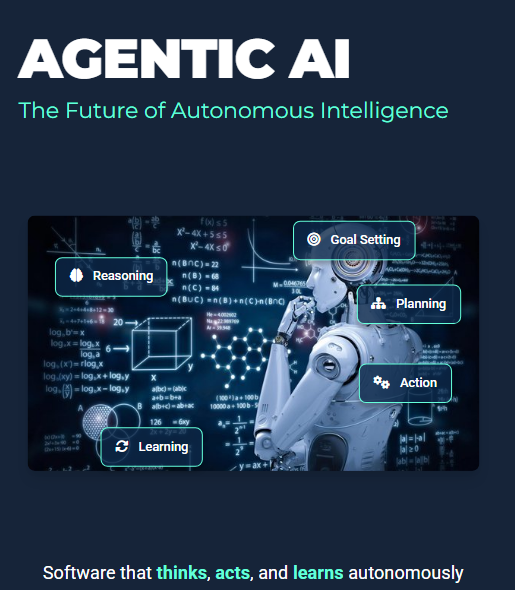
A Brief Overview of Agentic AI’s Operation
Fundamentally, an agentic ai is a cycle of perception, thought, and action. Here is a condensed overview of the procedure:
- Perception: The no code AI agent absorbs data from its surroundings. This could be a fresh spreadsheet row, a new email, or a form submission.
- Reasoning: With a large language model (LLM) acting as its “brain,” the no code AI agent evaluates the data, comprehends the situation, and chooses the best course of action in accordance with your predetermined objectives.
- Execution: The no code AI agent then carries out the required tasks by utilizing a variety of tools and integrations. This could entail adding a task to your to-do list, sending an email, or changing a database.
No code tools to make ai agent that offer a visual, drag-and-drop interface enable this entire process, making it accessible to all users, regardless of technical proficiency.
Micro-CTA: Curious in how artificial intelligence might improve your workflow? See our post on The Top 12 AI Tools for Successful Marketing.
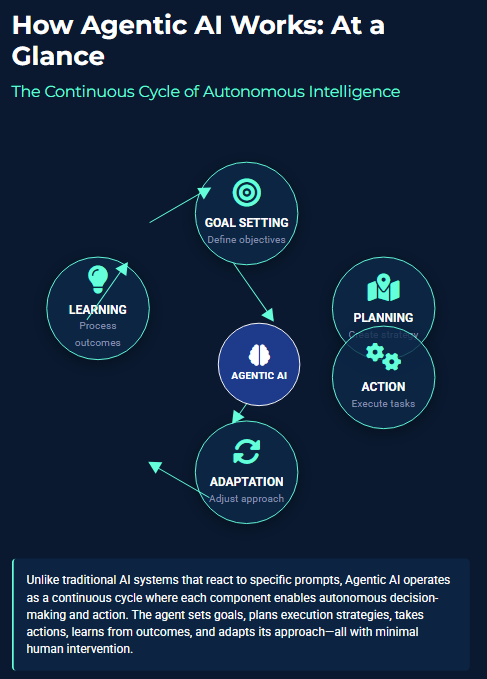
The Greatest No-Code Platforms for AI Agent Development
You can build your own AI agent without knowing how to program. Numerous platforms provide simple, easy-to-use interfaces that make it simple to develop intricate automations. The top no code tools to make ai agent are as follows:
- Zapier: With its new “AI Agents” feature, Zapier, a major player in the automation industry, enables you to design agentic AI that follow natural language commands. Because it can link to thousands of apps, it’s super flexible for creators and small businesses.
- Make (formerly Integromat): Make is well-known for its visual workflow builder, which enables sophisticated automations. For those who like more control over the logic and flow of their agentic AI, Make is a great pick.
- Lindy: Lindy is designed especially for building no-code AI agents for teams in operations, sales, and support. It provides tons of ready-made templates for typical business processes and customer-facing automations.
- N8N: An open-source powerhouse that allows you to build complex AI workflows and connect APIs visually. With its new AI nodes, N8N lets you integrate LLMs like GPT or Claude to make self-running, decision-making agents—perfect for developers who like flexibility without full coding.
- Relevance AI: Relevance AI offers “AI Teammates”—agents you can create via a clean, no-code dashboard. Ideal for scaling repetitive tasks or automating multi-step workflows using natural language.
- MindStudio: MindStudio makes AI app and agent creation ridiculously easy. Describe what you want in plain English, and it builds a chain-of-thought workflow automatically. Perfect for creators, educators, and startups.
- Kore.ai: Kore.ai’s Agentic App Builder empowers users to make conversational or process-driven AI agents with no code. It includes pre-built templates for HR, sales, and customer service automation.
- Dify: Dify is for building, deploying, and managing autonomous agents and RAG workflows in a visual, collaborative interface. It’s developer-friendly yet approachable for non-tech users too.
| Tool | No-Code Friendly | Open Source | Integrations | Best For | Key Feature | Flexibility | Pricing |
|---|---|---|---|---|---|---|---|
| Zapier | ✅ Yes | ❌ No | 5,000+ apps | General automation & AI task agents | Natural-language “AI Agents” | High | Free + Paid |
| Make | ✅ Yes | ❌ No | 1,500+ apps | Complex workflow builders | Visual flow logic | Very High | Free + Paid |
| Lindy | ✅ Yes | ❌ No | CRM, Ops tools | Teams & business automation | Pre-built task templates | Medium | Paid |
| N8N | ⚙️ Semi | ✅ Yes | 500+ APIs | Tech-savvy users & devs | AI & API nodes | Very High | Free + Self-Host |
| Relevance AI | ✅ Yes | ❌ No | Webhooks, APIs | Internal team automations | “AI Teammates” | Medium | Free + Paid |
| MindStudio | ✅ Yes | ❌ No | Limited | Solo creators & startups | Natural-language project builder | Medium | Free + Paid |
| Kore.ai | ✅ Yes | ❌ No | Enterprise systems | Enterprises, CX automation | Agentic App Builder | High | Paid |
| Dify | ⚙️ Low-Code | ✅ Yes | API + DBs | AI developers & teams | RAG + agent builder | Very High | Free + Paid |
- For beginners: MindStudio, Zapier
- For startups: Relevance AI, Make
- For power users: N8N, Dify
- For enterprises: Kore.ai, Lindy
We’ll concentrate on Zapier for this lesson because it has a free tier and is among the easiest platforms for beginners to use.
Pro Tip: Take into account the programs you use most frequently when selecting a platform. Your no code AI agent will be more potent if a platform has more integrations with your current tech stack.
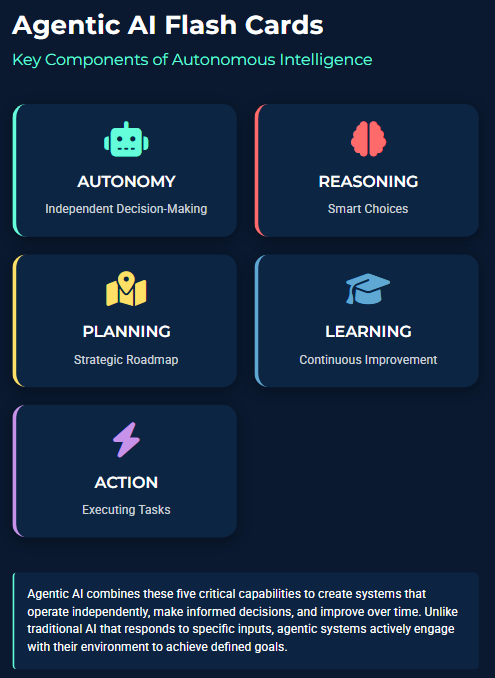
How to Build AI Agent: Using Zapier
Let’s create a straightforward yet useful no code AI agent that automatically composes a response and keeps an eye on your emails for meeting requests.
Objective: Develop a no code AI agent that recognizes emails requesting a meeting, determines your availability, and composes a courteous reply offering a few times.
Step 1: Register and Create a New Agent
To create a free account, visit agents.zapier.com.
Click the “+ New Agent” option after logging in.
Step 2: Establish the Agent’s Objective
You will be asked by Zapier to explain what you would like your agentic ai to perform. Be explicit and precise. You can write the following for our example:
"I look at my Google Calendar to see the next three 30-minute timeslots in the upcoming week as soon as I get an email in Gmail requesting a meeting. Next, write a kind response to the sender that suggests these times."Step 3: Configure the Trigger
Select the app that will activate your agentic ai by clicking on “Add trigger.” In this instance, choose Gmail.
Select “New Email” as the trigger event.
Follow the instructions after connecting your Gmail account. One excellent technique to keep organized is to choose a specific folder or label to watch.
Step 4: Include Actions and Tools
It’s time to provide your agentic ai with the resources it requires to carry out its duties. Select “Add tools.”
Link Google Calendar: Choose the action Find Event after adding Google Calendar as a tool. The agentic ai will be able to verify your availability thanks to this.
Connect Gmail for the Action: Enter Gmail once more, but for the Create Draft Reply action.
Step 5: Make Instructions Better
Your original prompt will be converted into a more organized set of instructions by Zapier. To be more specific, you can alter these. To directly reference your connected apps and operations, use the “/” command. Your sophisticated instructions may resemble this:
- Examine the content of each new email that enters Gmail.
- Use /gcal-find-event to locate three 30-minute timeslots on my calendar for the upcoming seven days if the email is a meeting request.
- Write a professional and courteous email to the original sender recommending these three timeslots using /gmail-create-draft-reply.
- Important: Before sending any emails, wait for my approval.
Step 6: Test Your Agent and Turn It On
You can use a sample email to test your agentic ai with Zapier. Make sure everything is functioning as it should by running the test.
You can activate your agentic ai after you’re satisfied with the outcome.
Mini-Challenge: Consider how to build ai agent that sends items from your RSS feed to a Slack channel on a certain subject. You should be done in less than five minutes!
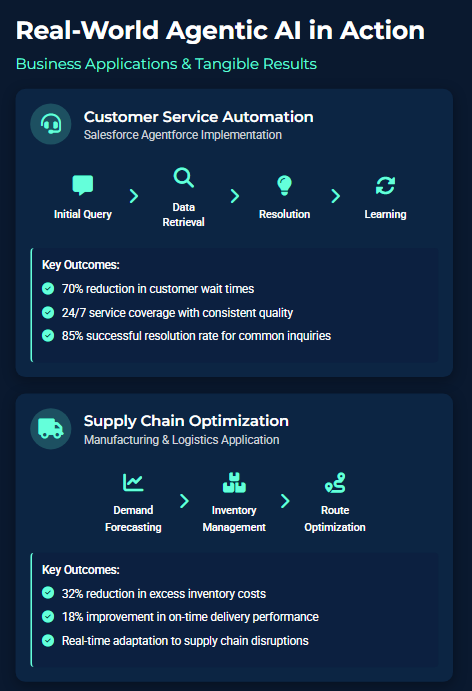
Useful Applications for Your No-Code AI Agent
Agentic ai has a plethora of potential applications. Here are some additional suggestions to spark your imagination:
- 🚀 Social Media Assistant: Build your own AI agent that automatically composes a thank-you tweet when your brand is mentioned on Twitter.
- 📌 Lead Qualification Agent: Create a no code AI agent that receives new leads via a form, adds corporate details from a CRM to the data, and then assigns a score depending on your predetermined standards.
- 🔍 Content Curation Bot: Configure a no code AI agent to search the internet for articles on a particular subject, compile them, and put them to a Notion database for your perusal.
- 💡 Analytics Reporter: Create an agentic ai that receives a daily CSV export from your analytics program, extracts important metrics, and uses Slack to deliver a summary report to your team.
I would like to know which monotonous task in your everyday process you would most like to automate.
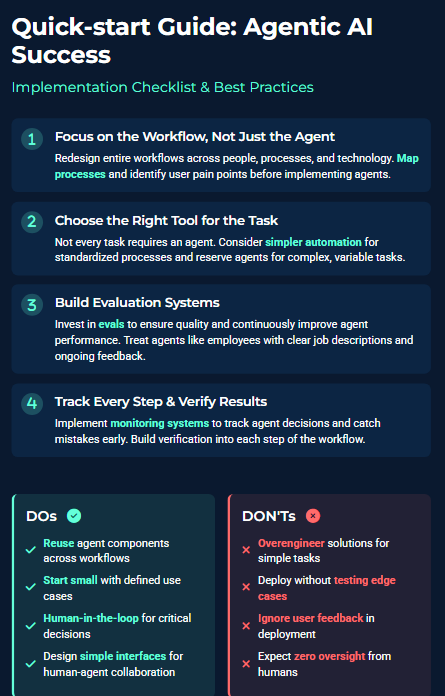
Expert Advice and Unknown Tricks for Boosting Your AI Agent
Are you prepared to advance your no code AI agent? Here are some pointers and advice:
- 🎯 Combine with ChatGPT for Better Reasoning: You can include a phase in your workflow that prompts the ChatGPT API if you require your agentic ai to conduct more intricate analysis or provide more imaginative content. This is excellent for jobs like classifying client feedback or summarizing lengthy publications.
- 📌 Utilize Webhooks for Maximum Flexibility: Webhooks are supported by the majority of no code tools to make ai agent and let you link your agentic ai to nearly any service or application, even if there isn’t a direct integration.
- 🚀 Establish a “Human in the Loop” Step: Include a step that notifies you for permission before to the final action being carried out for tasks that need a final check, such as mailing an invoice or publishing a blog post.
- 💡 Utilize Pre-Existing Templates: The majority of platforms offer a collection of pre-made templates for typical use cases. Instead of starting from scratch, start with a template and modify it to suit your requirements.
Conclusion: Iterative development produces the most successful agentic ai. Begin with a straightforward assignment, test and improve your agentic ai, and then progressively increase its skills and complexity.
Ready to use AI Agents made with No-Code tools
If you’re looking for plug-and-play AI agents that don’t require coding, these GitHub repositories are great starting points. Both are built with no-code or low-code tools, so you can experiment with automation and AI integration right away — perfect for creators, developers, or students exploring AI workflows.
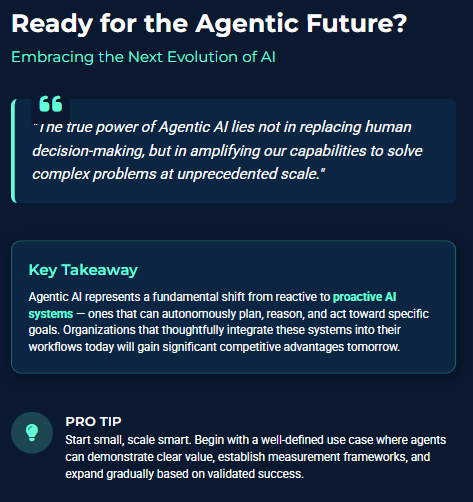
Questions and Answers (FAQ)
- Is it secure to grant my apps and data to AI agents?
Reputable no code tools to make ai agent with strong security protocols include Make and Zapier. Nonetheless, it’s always a good idea to adhere to the least privilege principle, which states that your agentic ai should only be granted access to the apps and data that are necessary for it to carry out its duties. - Is it possible to create an AI agent that communicates with clients?
Yes, but starting with internal tasks is the best course of action. When creating a customer-facing no code AI agent, be sure to include a clear escalation path to a person for delicate or complicated problems. - What distinguishes a chatbot from a no-code AI agent?
A chatbot often works through a single channel, such as a website or messaging app, and is primarily made for communication. An agentic ai is a more general term that can do activities across several applications and may or may not have a conversational interface. - What is the price of developing and implementing a no-code AI agent?
Free tiers are available on many platforms, such as Make and Zapier, and are ideal for developing your initial team of no code AI agent. You can upgrade to a premium plan, which normally starts at $20 to $30 per month, as your consumption and automation sophistication increase. - Where can I view a video demonstration of an AI agent in action?
This fantastic Zapier video demonstrates the operation of their agentic ai: Demo of Zapier AI Agents
It’s no longer science fantasy to build your own AI agent. Anyone may develop clever automations that save time, cut down on errors, and free up critical mental space with the help of no code tools to make ai agent. What’re you waiting for, then? Create your first no code AI agent now to reach a higher level of efficiency.

